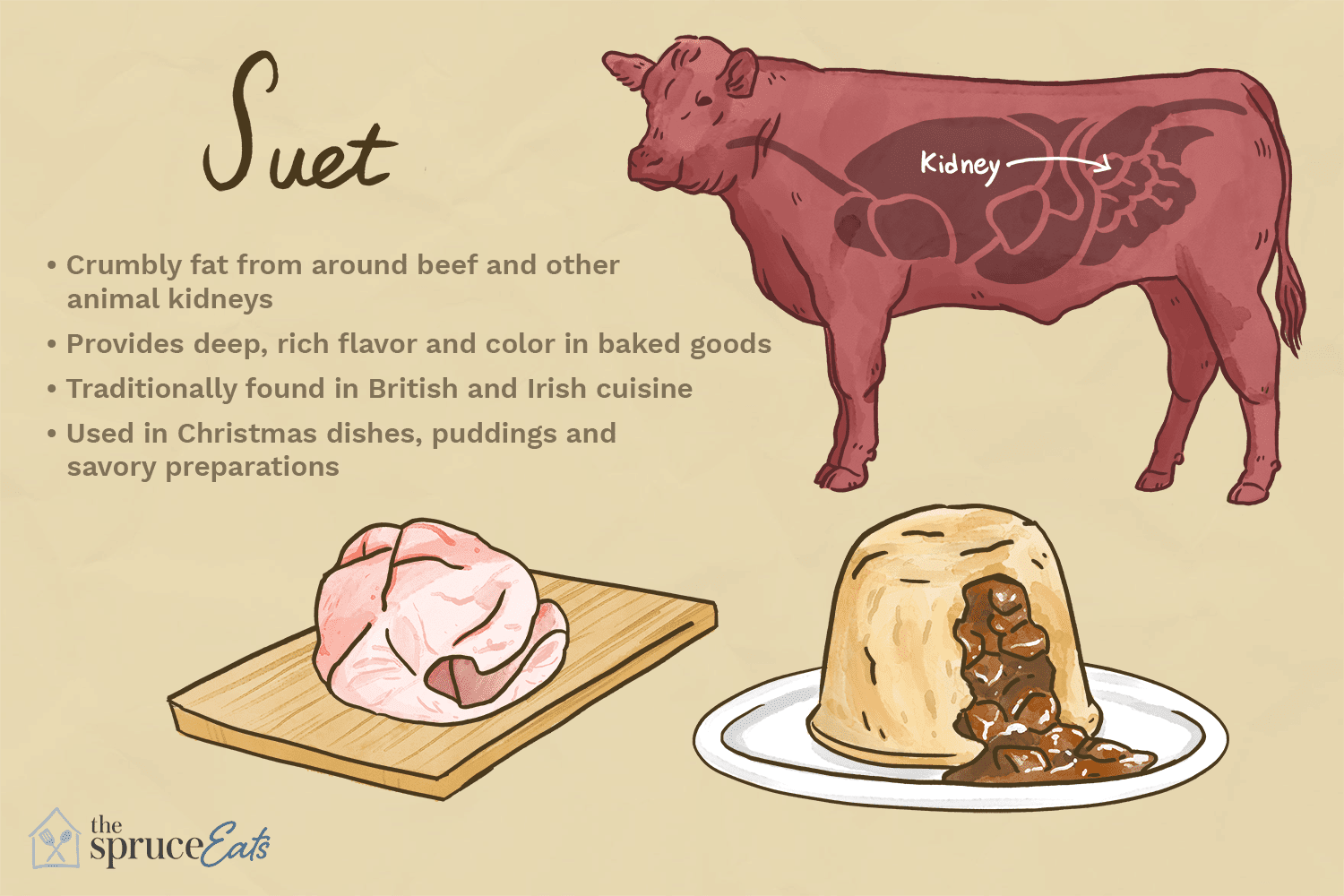Do you know your Tallow from your Suet? These traditional cooking and naturally nutrient dense dietary fats are making a welcome comeback.
Modern, high fat, low carb, low inflammatory diets like the Carnivore Diet, Paleo, AIP and Ketogenic Diets have turned this beef fat into a shining star but there is still quite a bit of confusion out there on the difference between Suet and Tallow. In this article we explain:
Beef Suet is the hard fatty part of the cow that surrounds the kidneys and around the loins of the carcass. Beef Suet has a white appearance, slightly crumbly, and almost dry to the touch. Suet has a melting point of between 113 °F (45 °C) and 122 °F (50 °C).
The high smoke point of Suet makes it the perfect beef fat for stable frying and was a traditional way of making calorie-dense pastries, puddings, and pies.
Tallow is the rendered or melted down version of suet. Tallow is simple to make at home DIY and gives you a clean, healthy animal fat that you can cook with, baste with, sauté, deep fry, or even spread like butter. Just a couple of generations ago and before the modern obesity and diabetes pandemic, beef tallow (rendered suet) was what people used to cook with as their main cooking oil.
Not only does Beef Tallow have a very high smoke point and a long shelf life at room temperature, but it’s also a way to ensure we’re using the whole animal in our cooking ~ a practice our forefathers understood the value of and that we’re re-learning how to do today with nose to tail eating.
Suet, as opposed to muscle fat, contains a higher level of a triglyceride known as glyceryl tristearate, otherwise known as stearin. The result is that suet has a higher melting point and congealing point than regular fat.

What is Suet Taste and Texture Like? Fresh raw suet has a mild taste, a slightly meaty smell, and a dry, crumbly texture. Pan Fried Suet on high heat takes on more beefy flavor notes with the meaty bits becoming intensely crispy and tasty. Add Kosher salt to bring out the beefy notes even more.
Storing Suet is super easy. Suet should be kept in the refrigerator and used within 5 days if fresh or portion it up using freezer bags where Suet will keep for 6 months frozen then use as needed.
Storing Tallow is even easier. Tallow will solidify and keep at room temperature in a sealed container for up to a year and wont go rancid. Beef Tallow will keep even longer in the refrigerator or indefinitely in the freezer.
HOW SUET AND TALLOW HAVE BEEN USED FOR CENTURIES.
- In British, Irish, Scottish, and Australian cuisine, suet was used as a rich beef fat source to make pastries and either sweet or savory puddings such as steak and kidney pie, spotted dick, and jam roly-poly.
- With Suet being attached to the underside of a Beef Kidney, it is no surprise that many dishes that inculded suet were in fact old recipes for beef kidney and the suet was included to avoid waste and increase the energy and nutrients of the dish.
- Suet was and continues to be also used in recipes for soft-textured pastry, dumplings, Scottish haggis, mincemeat, Christmas pudding, and the rendered version of Suet called Tallow.
- Due to the very high energy and calorie density of Suet i.e., 242 calories per ounce, Beef or Lamb Suet was once used as a high energy source by Polar explorers and mountaineers.
- Rendered down Suet was long used to make Tallow as a healthy room temperature stable cooking oil long before the use of refrigeration.
- Tallow was a highly prized fat used to make Pemmican, a traditional food used by Native Americans to survive harsh winters.
- Tallow was also a traditional ingredient in candle wax making and natural soap making.
Below is an enchanting video by Townsend and Son on how Suet was rendered, and Tallow prepared and used in 18th Century America.
5 Ways Tallow (Beef Fat) Can Help You Lose Weight
FAQ
Can I use ground beef fat for suet?
Is beef suet safe to eat?
Can you use beef suet for cooking?
What is beef suet used for?
Another unique use of beef suet is in Christmas pudding where the rich flavor of this fat compliments well with brandy-soaked dried fruits. On the other hand, tallow has found its place in making soap bars or skincare ointments due to its skin-nourishing properties.
Does suet taste like beef?
Suet, as opposed to other types of beef fat, does not smell or taste like beef! Once suet is rendered into tallow, it has a very high smoke point. Tallow is shelf-stable at room temperature. Tallow is very rich in nutrients. As you can see, tallow rendered from suet is definitely something we want to have in our traditional foods kitchen!
What is the difference between suet and beef fat?
It is usually a by-product of the beef industry, and it is used in a variety of applications, including candle making, soap making, and as a cooking oil. Suet, on the other hand, is the rendered fat from the kidneys of cattle. It is a soft fat that is often used in pastries and other baked goods.
How do you make suet from beef fat?
1 cup rendered fat and 1 cup of chunky peanut butter should be thoroughly blended to create a liquid. add 1/2 cup white or wheat flour and 3 cups of ground corn. Mix the ingredients well. In the warmer months, this makes the suet less messy and easier for birds to consume. Can you make suet out of beef fat?
